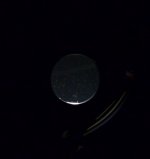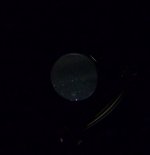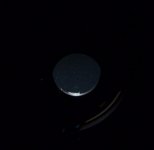Not unkind at all this is a tedious thread , just look at the source . They are no more odd than we are . What is nice about Cloudy Nights is that a thread like this one would have been locked and kept locked for all the garbage it involves .A bit unkind saying another tedious thread from BF!! But they can be an odd lot on there.
Manufacturing fault or something else, I wonder what their quality sampling is like and is it widespread in the range.
-
Welcome to BirdForum, the internet's largest birding community with thousands of members from all over the world. The forums are dedicated to wild birds, birding, binoculars and equipment and all that goes with it.
Please register for an account to take part in the discussions in the forum, post your pictures in the gallery and more.
You are using an out of date browser. It may not display this or other websites correctly.
You should upgrade or use an alternative browser.
You should upgrade or use an alternative browser.
Glare Monsters! (1 Viewer)
- Thread starter [email protected]
- Start date
- Status
- Not open for further replies.
More options
Who Replied?The idea behind the list is to help you in your search for a glare resistant binocular. It is similar to Allbinos list in that it is just meant to be helpful in your search for a binocular that fits you.This glare list is inaccurate and useless, and ought to be ignored.
There is no mention of the situation producing glare, what type of glare, whether the glare is a major or minor problem, how it compares side by side with similar instruments. Additions and omissions appear to be at the whim of Dennis.
We do not even know if the binocular is set up correctly to the best position for the user and their haptics.
For example, Dennis himself has stated if he got his eye position exactly right the NL's did not give him glare.
Try the binoculars yourself.
I didn't say it was 100% accurate, nor is Allbinos ranking. Glare can be personal, but by using the list you reduce the odds of buying a binocular that is glare prone because benefit from other birders experience with that binocular.
If you choose a binocular from the glare resistant list, you will be less likely to experience glare. You should still try the binoculars yourself, but that can be difficult to do unless you live close to a dealer that stocks a lot of different binoculars, and then you may not be able to test them under the conditions that produce glare.
I got the same kind of glare with the NL that Binomania described. They even went into methods to try to reduce it, so glare is without a doubt a problem with the NL. At the bottom is a picture of the glare in the NL observed by Binomania which is exactly what I observed.
A poll would be interesting, like the one below, but it would be hard to get a large enough sample size on many different binoculars. In the poll, 40% of users had problems with glare in the NL.
Here are some posts from that thread.
WDC
"At any rate, I do see glare, though I can tolerate it, as it is located at the bottom of the field, and I don't have a veiling sort of glare over the entire field like some Binoculars provide under similar viewing conditions. So, for me, the 8x32 NL provides a great view in most respects, unless under bright overhead light, and facing towards the sun, in which case, there is a real artifact going on, however in the area of the field that is NOT affected by glare, the contrast is better than others that have less glare, but spread it over the entire field"
PeterPS
"I do not know why so difficult to understand that it's not about skills but about eye cups and ER. That the NL's have glare issues is an objective fact (several pics on this forum and elsewhere have shown strong internal reflections at the bottom of the EP), the question is who can avoid it and who cannot and that depends on how the eye cups fit your eye sockets---some people can move the binos a bit down and get close enough to the EP to avoid being affected by glare, others cannot due to their facial features."
Virag
"I am not an eyeglass wearer and can see the glare in NL 8x42. (Also, I get blackouts when I blink my eyes). However, for me, the glare problem is mostly related to the positions of eye cups touching my orbits. If I lift the binoculars a little bit up, without changing the position of my head, I see glare at the bottom of FOV. However, the FOV is enormous in NL and still, there is plenty of area in FOV, even after not considering the affected area by glare. Maybe I need more training to fully avoid glare in NL."
Lee
"For example, when reviewing NL 8x32 on Islay, we had almost 14 days of unbroken sunshine, which meant the glare was easily provoked if viewing in the right direction. On the remaining days which were cloudy or rainy, I didn't encounter glare at all."

Poll: does NL glare depend on eyeglasses?
I do not know why so difficult to understand that it's not about skills but about eyecups and ER. That the NLs have glare issues is an objective fact (several pics on this forum and elsewhere have shown strong internal reflections at the bottom of the EP), the question is who can avoid it and...
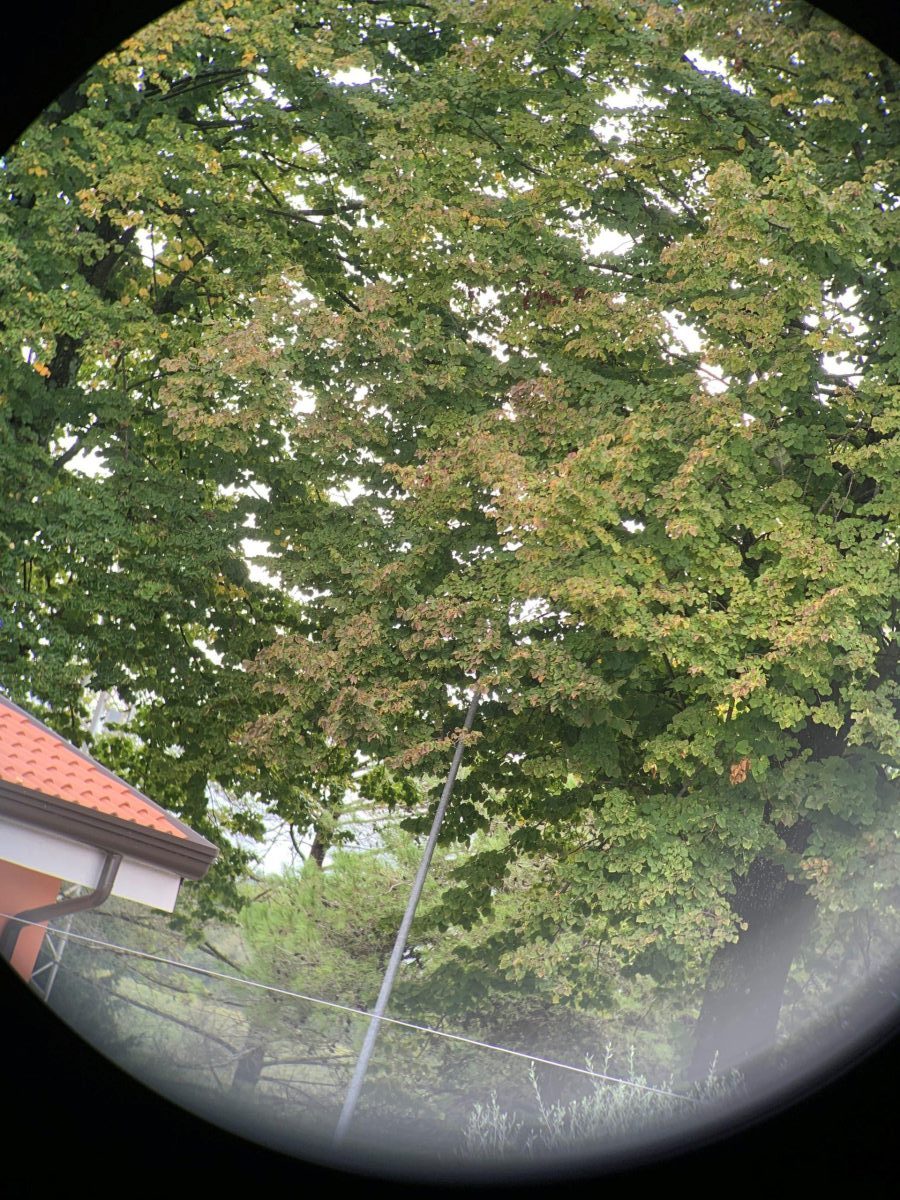
L'effetto abbagliamento nello Swarovski NL PURE? Ecco come risolverlo -
Dopo mesi dal test sul campo dello Swarovski NL PURE ho avuto il piacere, grazie alla disponibilità di un lettore di Binomania, di verificare la presenza dell'abbagliamento. E' possibile risolvere il problema molto facilmente, ma perché in Austria non ci hanno ancora pensato?
 redirect.viglink.com
redirect.viglink.com
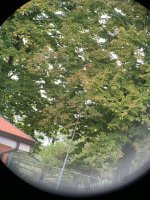
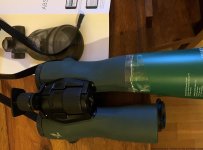
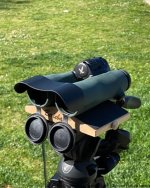
Last edited:
Paultricounty
Well-known member

Anybody with a half a brain and just a little bit of experience with a few binoculars, know that the list is garbage, and has no bearings on whether one person will see glare or not. The problem is newcomers will look at this, and may actually think it has any bearing on the truth, and that is a disservice and goes against what the forum tries to stand for.The idea behind the list is to help you in your search for a glare resistant binocular. It is similar to Allbinos list in that it is just meant to be helpful in your search for a binocular that fits you.
I didn't say it was 100% accurate, nor is Allbinos ranking. Glare can be personal, but by using the list you reduce the odds of buying a binocular that is glare prone because you are aided by other peoples experience with that binocular.
If you choose a binocular from the glare resistant list, you will be less likely to experience glare. You should still try the binoculars yourself, but that can be difficult to do unless you live close to a dealer that stocks a lot of different binoculars, and then you may not be able to test them under the conditions that produce glare.
A poll would be interesting, like the one below, but it would be hard to get a large enough sample size on many different binoculars.

Poll: does NL glare depend on eyeglasses?
I do not know why so difficult to understand that it's not about skills but about eyecups and ER. That the NLs have glare issues is an objective fact (several pics on this forum and elsewhere have shown strong internal reflections at the bottom of the EP), the question is who can avoid it and...www.birdforum.net
Here is an interesting post from Cloudy Night's where they actually quantified glare on several binoculars. the first time I have seen that done. The NL's were the worst and the porros were the best.
"I guess I have had a little too much time on my hands during the recent cloudy nights in Arizona. Here is some follow up on my glare tests. This was driven out of curiosity about glare in my NL Pure's. Yes, of all the binoculars I tested (6) ALL had glare, and all the glare could be eliminated with a shroud. I have now conducted new tests with more control and quantification of glare than the rough check done earlier. In the new ones, I have explored glare in a radial pattern about an LED light source in a darkish room.
The purpose was to establish a "zone of glare" for each set of binoculars under these admittedly very harsh conditions. The pattern involved approaching the light source with each binocular from eight radial directions from 5 meters away. The room had been marked in increments of 5 degrees from the light source along these radial arms out to 45 degrees (as viewed from 5 meters away).
When observing, I recorded the first significant appearance of glare along each direction, moving toward the light source origin. I repeated this testing in three sessions, on different days, with the same same binoculars.I averaged and charted the data. The results were interesting. I could establish a unique "zone of glare" for each pair of binoculars tested under these particular conditions. Here are the important comparative trends:
I'll give an example. The other night I was spotting a doubles location near the moon with my cherished NL 8x42s to set up for honing in with the big APM 100BTs. Searching very near the moon and gazing at the moon itself, I could see not glare in the NL's. The point source was very bright, but the surrounding background was pretty bright as well - not enough contrast to see glare. But I intentionally dropped 30 degrees or so to a dark background of trees, and then I could see a crescent of glare in my FOV opposite the moon.
No surprise. I suppose I could have seen glare in any of my binoculars as long as the angle from the moon was within their zone of glare. I am still thinking about why glare varies among these particular binoculars the way it does. My first thought is that actual field of view is the dominant variable. But the Maven's with the least (4.5) are right up there with the NL's for glare.
And the 12x42 NL's are not in the same lower zone as the Canon's and the Fuji's, even though they have the same FOV (6.5). Any ideas would be much appreciated. I think you nailed it. The roofs cluster together in FOV order. and so do porros together with Canon. I am showing charted data below to help illustrate:"

"I guess I have had a little too much time on my hands during the recent cloudy nights in Arizona. Here is some follow up on my glare tests. This was driven out of curiosity about glare in my NL Pure's. Yes, of all the binoculars I tested (6) ALL had glare, and all the glare could be eliminated with a shroud. I have now conducted new tests with more control and quantification of glare than the rough check done earlier. In the new ones, I have explored glare in a radial pattern about an LED light source in a darkish room.
The purpose was to establish a "zone of glare" for each set of binoculars under these admittedly very harsh conditions. The pattern involved approaching the light source with each binocular from eight radial directions from 5 meters away. The room had been marked in increments of 5 degrees from the light source along these radial arms out to 45 degrees (as viewed from 5 meters away).
When observing, I recorded the first significant appearance of glare along each direction, moving toward the light source origin. I repeated this testing in three sessions, on different days, with the same same binoculars.I averaged and charted the data. The results were interesting. I could establish a unique "zone of glare" for each pair of binoculars tested under these particular conditions. Here are the important comparative trends:
- The grand averages of the zones, by binocular, ranged from 19.8 to 38.3 degrees.
- The order of largest to smallest zones was NL 8x42 > NL 12x42 > Maven 15x56 > Nikon 7x50 SP > Canon 10x42IS > Fuji 10x50.
- The roofs had symmetrical zones of glare about the light source; whereas the porros were a little asymmetrical.
I'll give an example. The other night I was spotting a doubles location near the moon with my cherished NL 8x42s to set up for honing in with the big APM 100BTs. Searching very near the moon and gazing at the moon itself, I could see not glare in the NL's. The point source was very bright, but the surrounding background was pretty bright as well - not enough contrast to see glare. But I intentionally dropped 30 degrees or so to a dark background of trees, and then I could see a crescent of glare in my FOV opposite the moon.
No surprise. I suppose I could have seen glare in any of my binoculars as long as the angle from the moon was within their zone of glare. I am still thinking about why glare varies among these particular binoculars the way it does. My first thought is that actual field of view is the dominant variable. But the Maven's with the least (4.5) are right up there with the NL's for glare.
And the 12x42 NL's are not in the same lower zone as the Canon's and the Fuji's, even though they have the same FOV (6.5). Any ideas would be much appreciated. I think you nailed it. The roofs cluster together in FOV order. and so do porros together with Canon. I am showing charted data below to help illustrate:"
Last edited:
Here is an excellent older post by Henry Link describing why the NL has glare with pictures. That is exactly the kind of glare I saw in the NL.
"Here are three photos of the exit pupil of my 8x42 NL I made back in November. It was a sunny day with the binocular pointed toward a dark target, but with bright sunlight falling on the binocular from about 30º above the target.
The photo on the left shows the glare causing reflection at the edge of the objective lens as it appears with the camera lens centered. I hope everyone can agree that there is a bright reflection at the bottom of the exit pupil. The middle photo shows what happens if the camera lens is decentered a little vertically so that the reflection is covered by a baffle. Do we all agree that the reflection is gone? The right photo shows what happens if the lens is decentered the other way, so that all the reflective surfaces at the bottom of the objective edge are revealed.
I would suggest to anyone who can't see this reflection when looking in the direction of the sun to decenter your pupil up and down. If you reproduce the three conditions in the photos below, I don't see how it's possible for the reflection not to enter your eye somewhere along that vertical movement.
Notice the short bright line in the center if the reflection. That comes from the original attachment tab for the objective covers that has now been replaced. The star like spots are just dust mots on the front of the objective lens catching the sunlight coming from above.
Tim, I'm afraid your photo of the eyepieces is pretty much a red herring. Those reflections are at the eyepiece end and are completely harmless, covered by the eyepiece field stop when the eye is at the eyepiece for normal viewing and completely darkened anyway when your face is against the eye cup. Pay no attention to anything except the bright reflection at the edge of the exit pupil coming from the edge of the objective. That's the culprit."
"Here are three photos of the exit pupil of my 8x42 NL I made back in November. It was a sunny day with the binocular pointed toward a dark target, but with bright sunlight falling on the binocular from about 30º above the target.
The photo on the left shows the glare causing reflection at the edge of the objective lens as it appears with the camera lens centered. I hope everyone can agree that there is a bright reflection at the bottom of the exit pupil. The middle photo shows what happens if the camera lens is decentered a little vertically so that the reflection is covered by a baffle. Do we all agree that the reflection is gone? The right photo shows what happens if the lens is decentered the other way, so that all the reflective surfaces at the bottom of the objective edge are revealed.
I would suggest to anyone who can't see this reflection when looking in the direction of the sun to decenter your pupil up and down. If you reproduce the three conditions in the photos below, I don't see how it's possible for the reflection not to enter your eye somewhere along that vertical movement.
Notice the short bright line in the center if the reflection. That comes from the original attachment tab for the objective covers that has now been replaced. The star like spots are just dust mots on the front of the objective lens catching the sunlight coming from above.
Tim, I'm afraid your photo of the eyepieces is pretty much a red herring. Those reflections are at the eyepiece end and are completely harmless, covered by the eyepiece field stop when the eye is at the eyepiece for normal viewing and completely darkened anyway when your face is against the eye cup. Pay no attention to anything except the bright reflection at the edge of the exit pupil coming from the edge of the objective. That's the culprit."
Attachments
Last edited:
The above from last October. It was a response to Viraj and Paul who were using the term statistical significance to refer to the thread about NL Glare in eyeglasses Dennis is citing here, but in a different thread re 1032s. (Currently traveling and limited to copy/paste skills on phone). This conversation does have legs. Does it serve a purpose?Viraj and Paul,
If memory serves the poll being discussed in #60 and the 2 quotes above, is this one, Poll: does NL glare depend on eyeglasses?.
I have a wee bit of experience with both statistical process control in manufacturing and market research polling from marketing, (albeit since I'm an old fart), both from a career now well in the past. I have a fair understanding of these tools. I am not claiming I should be teaching them to anyone.
I fear the term statistical significance has become popular and like a lot of things that go that way, the actual meaning tends to wander. You can read about it here, A Refresher on Statistical Significance.
It is doubtful the results of this poll should be thought of as statistically significant, for several reasons. First worldwide population is estimated at 7.7+ billion. How many millions own binoculars? Can 32 people represent what this rather larger cohort experiences with glare from any binocular?
Sample size can be small but other conditions need to be met, (see article above), when that is the case. What one is measuring - parts/dimensions or people's experience is relevant. What one is using to measure - questions or tools is critical. It’s hard to accurately measure the diameter of a hole with a 12” straight ruler. Maljunolo, is exactly correct. The sample here of 32 respondents might work if the questions were designed differently. As well though, it’d be better if the outcomes were more distinctly different, then these 4 sort of close responses - 28.1, 31.3, 25.0, 15.6. One doesn't need statistics if you grab a handful of 5 parts from a bin of say 25 and all measure exactly the same. The odds are good the rest are good. If those same 5 had a range in measurement, (depending), the confidence in what's in the rest of the bin goes down.
Respectfully though, as I enjoy hanging here at least between migrations, the real problem is something else. Birdforum's Binocular subgroup is probably the last place one should direct questions such as this if we really needed a reliable outcome.
Why?
The subject of glare has been controversially discussed in this quite closed community for years. Sides have been drawn. A few are ardent supporters, and cite personal experiments to prove its existence. Others just as enthusiastically say something like “I can't see it, therefore how can you say it exists?" It's not clear, reading the back and forth, that there is agreement as to what glare is. Is it a little crescent of light in the lower portion of the FOV? Is it some sort of veiling thing making the whole view cloudy? Some combination of those? Or is it environmental conditions, being blamed as a product of a binocular thing? Mostly, we don't know each other personally. We haven't stood in the same place, looking at the same conditions, through the same binoculars and shared what we each saw to be able to definitively say we all agree what it is. What if someone is not trained, comes here and reads a bit, then goes out and looks out over water on a sun shiny day and sees glare and thinks "Aha, these binos are bad?”
Im taking bets.
Based on the small sample, question construction, close responses, and biased pool, this is what can safely be said based of this survey.
28.1% of 32 Birdforum respondents use the NL without glasses, do not see glare
31.3% of 32 Birdforum respondents use the NL without glasses, do see glare
25.0% of 32 Birdfourm respondents use the NL with glasses, do not see glare
15.6% of 32 Birdforum respondents use the NL with glasses do see glare.
Thats it.
One BFer shortly after this survey occurred, made the statement in a different thread, 46% of “birders” see glare in Swarovski NLs, citing the survey as proof. Sorry, no. This limited questionnaire cannot be interpreted to produce that conclusion. It seems even a stretch to predict things like 46.9% of BF respondents when viewing through an NL binocular will see glare or 53% will not, based on this.
This sentence from near the end of the attached post, is in fact referring to Dennis’ attempt to work the results of that older survey to his own life mission,
“One BFer shortly after this survey occurred, made the statement in a different thread, 46% of “birders” see glare in Swarovski NLs, citing the survey as proof. Sorry, no.”
“One BFer shortly after this survey occurred, made the statement in a different thread, 46% of “birders” see glare in Swarovski NLs, citing the survey as proof. Sorry, no.”
There was as I reread through the whole of postings in that eyeglass/NL glare thread some conversation, perhaps even some confusion, about the role of eyeglasses and/or different facial characteristics.
My own experience described a page or two back re noticing my own posture and discovering the role it was playing in bringing binos to my eyes and glare control, (after multiple decades of using binos and believing I knew what I was doing), seems potentially a more detailed example of how we may be inadvertently not managing for glare as well as we think.
I would add the both eye Cataract surgery I experienced this winter with eyes done one at a time a month or so apart and with eye glasses changing radically was a trip. I birded through all of that and experienced quite substantial differences with regard to binocular views and glare. I suspect it might be fair to say that experience gave me some idea of the experience two different people might have using binos, experiencing glare or not.
My own experience described a page or two back re noticing my own posture and discovering the role it was playing in bringing binos to my eyes and glare control, (after multiple decades of using binos and believing I knew what I was doing), seems potentially a more detailed example of how we may be inadvertently not managing for glare as well as we think.
I would add the both eye Cataract surgery I experienced this winter with eyes done one at a time a month or so apart and with eye glasses changing radically was a trip. I birded through all of that and experienced quite substantial differences with regard to binocular views and glare. I suspect it might be fair to say that experience gave me some idea of the experience two different people might have using binos, experiencing glare or not.
Paultricounty
Well-known member

I think a lot of this glare conversation comes down to some people being more sensitive to glare, more so than the binoculars themselves especially when were comparing upper mid grade and the top of the line. I generally travel every day with four different binoculars that I choose for that week, or for the day.
I can’t count how many times I’ve read something here or on some other optics forum the night before, discussing an Issue with glare in some binoculars, only to find myself the next day using that binocular and seeing the glare under certain conditions. Then I grab another similar bino , and low and behold there’s glare in those as well. The moral of the story imo, is that seeing glare in these high quality binoculars is generally a product of the lighting conditions and some observers over sensitivity to the glare, and the least of the issue is the optics.
Certainly age , eye surgery , facial structure and or combinations of these factors all have an effect imo. I’d bet considering all the posts about glare with so many binoculars , that Dennis falls into one or some of these categories.
I can’t count how many times I’ve read something here or on some other optics forum the night before, discussing an Issue with glare in some binoculars, only to find myself the next day using that binocular and seeing the glare under certain conditions. Then I grab another similar bino , and low and behold there’s glare in those as well. The moral of the story imo, is that seeing glare in these high quality binoculars is generally a product of the lighting conditions and some observers over sensitivity to the glare, and the least of the issue is the optics.
Certainly age , eye surgery , facial structure and or combinations of these factors all have an effect imo. I’d bet considering all the posts about glare with so many binoculars , that Dennis falls into one or some of these categories.
Last edited:
henry link
Well-known member
Here's a link to a later post from that thread in which I describe how the glare can be virtually eliminated in the 8x42 NL by very careful adjustment the eyecup length.Here is an excellent older post by Henry Link describing why the NL has glare with pictures. That is exactly the kind of glare I saw in the NL.
"Here are three photos of the exit pupil of my 8x42 NL I made back in November. It was a sunny day with the binocular pointed toward a dark target, but with bright sunlight falling on the binocular from about 30º above the target.
The photo on the left shows the glare causing reflection at the edge of the objective lens as it appears with the camera lens centered. I hope everyone can agree that there is a bright reflection at the bottom of the exit pupil. The middle photo shows what happens if the camera lens is decentered a little vertically so that the reflection is covered by a baffle. Do we all agree that the reflection is gone? The right photo shows what happens if the lens is decentered the other way, so that all the reflective surfaces at the bottom of the objective edge are revealed.
I would suggest to anyone who can't see this reflection when looking in the direction of the sun to decenter your pupil up and down. If you reproduce the three conditions in the photos below, I don't see how it's possible for the reflection not to enter your eye somewhere along that vertical movement.
Notice the short bright line in the center if the reflection. That comes from the original attachment tab for the objective covers that has now been replaced. The star like spots are just dust mots on the front of the objective lens catching the sunlight coming from above.
Tim, I'm afraid your photo of the eyepieces is pretty much a red herring. Those reflections are at the eyepiece end and are completely harmless, covered by the eyepiece field stop when the eye is at the eyepiece for normal viewing and completely darkened anyway when your face is against the eye cup. Pay no attention to anything except the bright reflection at the edge of the exit pupil coming from the edge of the objective. That's the culprit."
Swarovski NL 8x42 - First Impressions
That was three years ago and since then I have experienced no significant problem with glare. But, I can bring it back anytime I choose by moving the eyecups out just a little bit.
Last edited:
Paultricounty
Well-known member

So wouldn’t that dispel the notion that it’s the binoculars design , and that it’s more of an individual issue?Here's a link to a later post from that thread in which I describe how the glare can be virtually eliminated in the 8x42 NL by very careful adjustment the eyecup length.
Swarovski NL 8x42 - First Impressions
That was three years ago and since then I have experienced no significant problem with glare.
henry link
Well-known member
It's a design flaw that causes what would be a fairly uncritical eyecup length adjustment, workable across 2-3mm, to be narrowed to a fraction of a millimeter. A sweet spot so narrow that some users never find it, especially if they stick to the click stops.
Paultricounty
Well-known member

But the question is how many actually need to find that exact spot not to have a glare issue? Have you had a chance to see if other users need this exact sweet spot your describing? I’ve had quite a few people use a few NL’s I have and had, and nothing really stuck out in this fashion.It's a design flaw that causes what would be a fairly uncritical eyecup length adjustment, workable across 2-3mm, to be narrowed to a fraction of a millimeter. A sweet spot so narrow that some users never find it, especially if they stick to the click stops.
In my case after the old man, leaning neck thing, and noticing glare was managed just fine when I fixed my posture, It seems less a design flaw. Perhaps trying to shove all the optics performance, widish FOV, better AFOV, flat field into a shortish bino with bent body tubes, that a design choice was made. I’m suggesting choice rather than flaw, as I see flaw as inadvertent screwup. I’m skeptical Swaro didn’t see the possibility rather they assumed many would figure out the work around and adjust. Unfortunately for them, they did not count on, think about, Birdforums fixation on the topic…It's a design flaw that causes what would be a fairly uncritical eyecup length adjustment, workable across 2-3mm, to be narrowed to a fraction of a millimeter. A sweet spot so narrow that some users never find it, especially if they stick to the click stops.
From Binomania. Talking about glare in the NL 8x42. Interesting that they said Swarovski limited the FOV in the NL 8x32 because they knew they had glare problems in the NL 8x42. I always wondered why the NL 8x32 had a smaller FOV than the NL 8x42.
"I believe that this glare effect may depend on the enormous field of view provided and on some "distraction" during the design phase, which - in my very personal opinion - subsequently led to limiting the field of view in the NL PURE 8×32 model. Many enthusiasts were expecting, in fact, amazing performances in regard to the wide angle of the 32 mm which, in practice in the 8x version is inferior to that provided, for example, by the Zeiss Victory SF 8×32
I think the presence of the glare effect in these binoculars is also the cause of a real field of view of the NL PURE 8×32 version that is much lower than what enthusiasts might have predicted, compared to that framed by the 8×42. On the other hand, even with this model, some enthusiasts noticed a bit of a "glare effect" but as you may have understood, I did not have the pleasure of testing it.
In fact, the NL PURE 8×32 frames 150m at 1000 m, while the Zeiss Victory SF 8×32 frames 155m at 1000 m. The situation is slightly reversed in the 10x32 versions, as the Swarovski frames 132m at 1000 m, while the Zeiss frames 130.
For further impressions, I invite you to also read this post: Nuovi Swarovski NL PURE 32 -
With this latest test of mine, what do I hope to achieve?
Actually. nothing particular, given that in Austria no one has ever responded to my criticism, I only hope for enthusiasts that a future version of this product may include the presence of a removable lens hood or a new conformation of the optical hull that is able to somehow - to simulate the performance of a small lens hood. In fact, I believe that the Swarovski NL PURE could become a point of reference in the sector if the company solved this problem, which for many enthusiasts or sellers may appear irrelevant but which I believe obscures the original purpose of the designers.
It remains to be seen whether Austria will be willing to admit the presence of this problem, or whether they will simply continue to ignore it. "
"I believe that this glare effect may depend on the enormous field of view provided and on some "distraction" during the design phase, which - in my very personal opinion - subsequently led to limiting the field of view in the NL PURE 8×32 model. Many enthusiasts were expecting, in fact, amazing performances in regard to the wide angle of the 32 mm which, in practice in the 8x version is inferior to that provided, for example, by the Zeiss Victory SF 8×32
I think the presence of the glare effect in these binoculars is also the cause of a real field of view of the NL PURE 8×32 version that is much lower than what enthusiasts might have predicted, compared to that framed by the 8×42. On the other hand, even with this model, some enthusiasts noticed a bit of a "glare effect" but as you may have understood, I did not have the pleasure of testing it.
In fact, the NL PURE 8×32 frames 150m at 1000 m, while the Zeiss Victory SF 8×32 frames 155m at 1000 m. The situation is slightly reversed in the 10x32 versions, as the Swarovski frames 132m at 1000 m, while the Zeiss frames 130.
For further impressions, I invite you to also read this post: Nuovi Swarovski NL PURE 32 -
With this latest test of mine, what do I hope to achieve?
Actually. nothing particular, given that in Austria no one has ever responded to my criticism, I only hope for enthusiasts that a future version of this product may include the presence of a removable lens hood or a new conformation of the optical hull that is able to somehow - to simulate the performance of a small lens hood. In fact, I believe that the Swarovski NL PURE could become a point of reference in the sector if the company solved this problem, which for many enthusiasts or sellers may appear irrelevant but which I believe obscures the original purpose of the designers.
It remains to be seen whether Austria will be willing to admit the presence of this problem, or whether they will simply continue to ignore it. "
Last edited:
You're correct, Henry. It is a design flaw in the NL 8x42. The eye cup length should not have to be that precise, as you say. I think Swarovski knew this and that is why they reduced the FOV on the NL 8x32. I still had glare on the NL 8x32, but it wasn't as bad as the NL 8x42. I think the Binomania solution of perhaps an included removable lens hood or a new conformation of the optical hull that is able to somehow - to simulate the performance of a small lens hood could be a solution to the glare. From Binomania.It's a design flaw that causes what would be a fairly uncritical eyecup length adjustment, workable across 2-3mm, to be narrowed to a fraction of a millimeter. A sweet spot so narrow that some users never find it, especially if they stick to the click stops.
"I believe that this glare effect may depend on the enormous field of view provided and on some "distraction" during the design phase, which - in my very personal opinion - subsequently led to limiting the field of view in the NL PURE 8×32 model. Many enthusiasts were expecting, in fact, amazing performances in regard to the wide angle of the 32 mm which, in practice in the 8x version is inferior to that provided, for example, by the Zeiss Victory SF 8×32
I think the presence of the glare effect in these binoculars is also the cause of a real field of view of the NL PURE 8×32 version that is much lower than what enthusiasts might have predicted, compared to that framed by the 8×42. On the other hand, even with this model, some enthusiasts noticed a bit of a "glare effect" but as you may have understood, I did not have the pleasure of testing it.
In fact, the NL PURE 8×32 frames 150m at 1000 m, while the Zeiss Victory SF 8×32 frames 155m at 1000 m. The situation is slightly reversed in the 10x32 versions, as the Swarovski frames 132m at 1000 m, while the Zeiss frames 130.
For further impressions, I invite you to also read this post: Nuovi Swarovski NL PURE 32 -
With this latest test of mine, what do I hope to achieve?
Actually. nothing particular, given that in Austria no one has ever responded to my criticism, I only hope for enthusiasts that a future version of this product may include the presence of a removable lens hood or a new conformation of the optical hull that is able to somehow - to simulate the performance of a small lens hood. In fact, I believe that the Swarovski NL PURE could become a point of reference in the sector if the company solved this problem, which for many enthusiasts or sellers may appear irrelevant but which I believe obscures the original purpose of the designers.
It remains to be seen whether Austria will be willing to admit the presence of this problem, or whether they will simply continue to ignore it"
Can’t say I ve ever read here anyone has taken apart a Bino, (other than Bill Cook of course), especially a Swaro. My understanding is each model comes with proprietary tool kit without which one can’t be disassembled.
As well I’m not aware anyone other than Gil’s has access to lab quality measuring devices. And I’m not sure the lab that Gil’s uses has latest and greatest. So most of what we think we know about what goes on within a Bino is outside looking in, a guess, an estimate.
It can be argued virtually everything we read as explanations for this or that issue is Hypothesis, conjecture.
Dennis you’ve done a great job of finding these theories, excerpting them, in support of your own belief/experience, repeating them in whatever order that serves your purpose, while ignoring alternative experiences and competing theories.
There've been some infamous characters in human history that thrived for a time on the working theory if you repeat a thing often enough, the masses will come to believe the thing is true, a fact.
This thread and your even longer history of promoting glare as a thing feels rather like that.
As well I’m not aware anyone other than Gil’s has access to lab quality measuring devices. And I’m not sure the lab that Gil’s uses has latest and greatest. So most of what we think we know about what goes on within a Bino is outside looking in, a guess, an estimate.
It can be argued virtually everything we read as explanations for this or that issue is Hypothesis, conjecture.
Dennis you’ve done a great job of finding these theories, excerpting them, in support of your own belief/experience, repeating them in whatever order that serves your purpose, while ignoring alternative experiences and competing theories.
There've been some infamous characters in human history that thrived for a time on the working theory if you repeat a thing often enough, the masses will come to believe the thing is true, a fact.
This thread and your even longer history of promoting glare as a thing feels rather like that.
henry link
Well-known member
If people don't notice the link between the glare behavior of the 8x42 NL and eyecup length there are a few possible explanations.But the question is how many actually need to find that exact spot not to have a glare issue? Have you had a chance to see if other users need this exact sweet spot your describing? I’ve had quite a few people use a few NL’s I have and had, and nothing really stuck out in this fashion.
1) They haven't yet experienced one of the situations that causes glare, so they just don't notice that anything is wrong. I use a test set-up that is guaranteed to produce visible glare for any human being with normal pupils because it involves the simple geometry of a clear sightline between a bright internal reflection and the pupil of a centered eye or a centered magnifier or a centered camera lens.
2) They fail to center their pupils properly every time they look through binoculars, either from incorrect IPD adjustment and/or from off-center pupil placement that accidentally de-centers the baffling system so that the bright spot at the edge of the objective cell that causes the glare is inadvertently blocked from reaching the eye by a beneficially de-centered baffle.
3) They happened to stumble on their best adjustment of the eyecup length with their very first try and wonder what all the glare talk is about.
If people can't get rid of the glare once they've found it then they just haven't discovered the best eyecup length for their face; something that Dennis and apparently a few others here have never been able to do, so they think the glare situation with the NLs is hopeless and a scandal.
Last edited:
- Status
- Not open for further replies.
Users who are viewing this thread
Total: 2 (members: 0, guests: 2)




